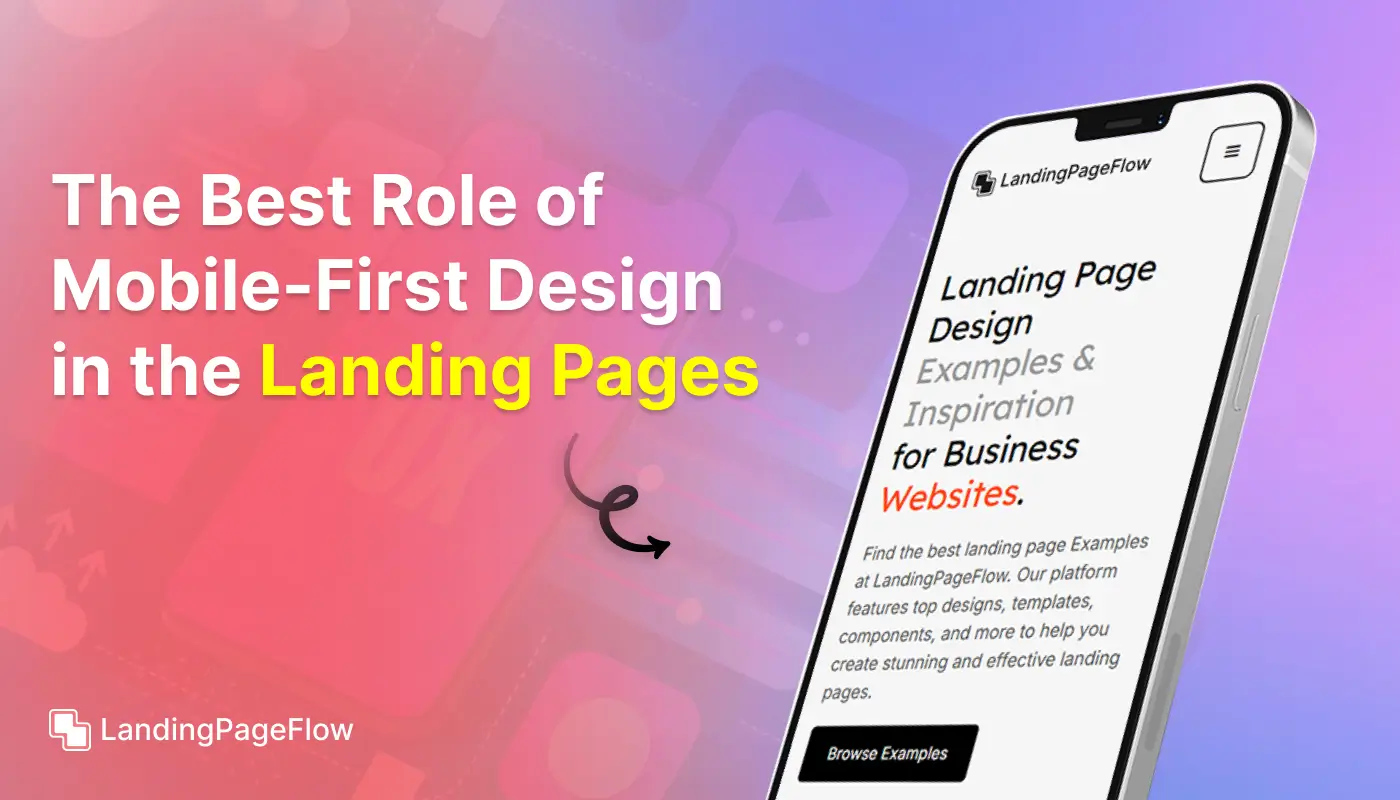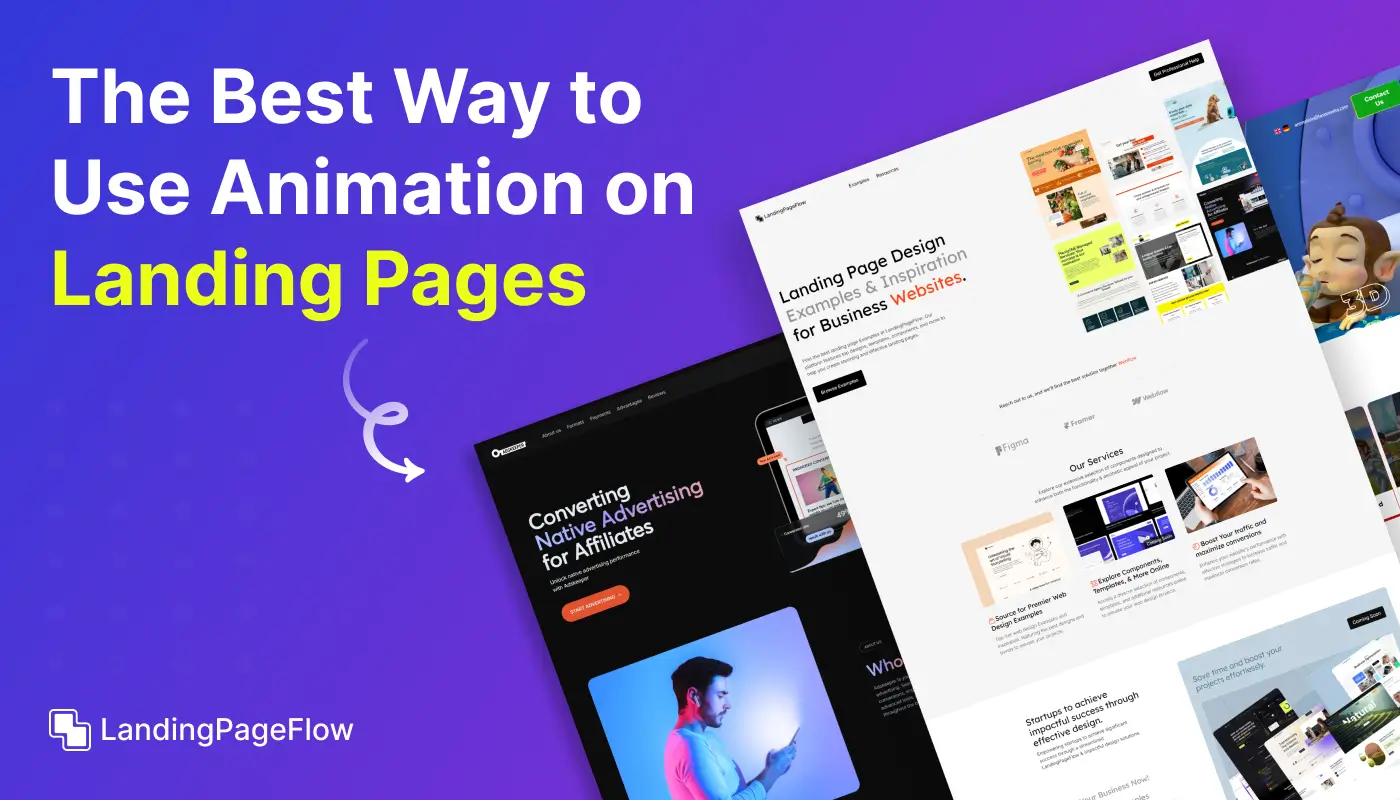Maximize Your SaaS Success with These Landing Page Strategies

November 17, 2025
Creating a SaaS landing page that fuels conversions starts with knowing your audience and speaking directly to their needs.
Strong visuals, clear messaging, and streamlined navigation can make the difference between a visitor bouncing and a user signing up.
In this guide, you’ll explore high-performing SaaS landing page strategies for 2025, and covering layout structure, persuasive CTAs, and trust-building elements.
We’ll also dive into lead nurturing opportunities, mobile-first design, and micro-interactions that keep users engaged from the first click.
With the right combination of design precision and strategic content placement, you can turn every landing page visit into a potential customer win.
"Want to create a SaaS landing page that drives signups?
Book a free strategy session & get recommendations for success."
Table of Contents
- Understanding the Role of Landing Pages in SaaS
- Key Elements of a High-Converting SaaS Landing Page
- Clear Value Proposition
- Compelling Headline and Subheadline
- Effective Call-to-Action (CTA)
- Social Proof and Testimonials
- Demonstration of Features and Benefits
- Lead Capture Forms
- Best Practices For SaaS Landing Page Optimization
- A/B Testing for Optimization
- Mobile Optimization
- Page Speed and Load Times
- Personalization and Targeting
- Analytics and Tracking
- Examples of Successful SaaS Landing Pages
- Tips For Continuous Improvement
1. Understanding the Role of Landing Pages in SaaS

- Purpose of SaaS Landing Pages: Landing pages for SaaS products are designed to capture leads, promote product features, and encourage sign-ups for trials or demos. They are critical in guiding potential customers through the decision-making process.
- Importance for Conversion: A well-optimized landing page helps to effectively communicate the value of your SaaS product, address potential pain points, and persuade visitors to take action, thereby increasing conversion rates.
2. Key Elements of a High-Converting SaaS Landing Page

Clear Value Proposition
- Importance: Your value proposition should clearly explain what sets your SaaS product apart and why it is valuable to your target audience.
- Tips:
- Highlight unique features and benefits.
- Address the specific problems your product solves.
Compelling Headline and Subheadline
- Importance: The headline and subheadline are the first things visitors see, and they must grab attention and convey the main benefit of your SaaS product.
- Tips:
- Use concise and powerful language.
- Ensure the headline is aligned with the visitor’s intent.
Effective Call-to-Action (CTA)
- Importance: CTAs guide visitors toward taking the desired action, whether it's signing up for a free trial, scheduling a demo, or downloading a resource.
- Tips:
- Make the CTA button prominent and visually appealing.
- Use action-oriented text such as “Start Free Trial” or “Request a Demo.”
Social Proof and Testimonials
- Importance: Social proof helps build credibility and trust by showcasing positive feedback from existing users or clients.
- Tips:
- Include customer testimonials, case studies, or user reviews.
- Display logos of well-known clients or partners.
Demonstration of Features and Benefits
- Importance: Visitors need to understand the key features and benefits of your SaaS product to make an informed decision.
- Tips:
- Use visuals such as screenshots or videos to demonstrate product functionality.
- Clearly outline how the product benefits users.
Lead Capture Forms
- Importance: Lead capture forms are essential for collecting visitor information and converting them into leads.
- Tips:
- Keep the form short and ask for only essential information.
- Offer something of value in exchange for contact details.
3. Best Practices For SaaS Landing Page Optimization

A/B Testing for Optimization
- Importance: A/B testing allows you to compare different versions of your landing page to determine which elements perform best.
- Tips:
- Test variations of headlines, CTAs, images, and copy.
- Use Marketo or other analytics tools to analyze results and make data-driven decisions.
Mobile Optimization
- Importance: With increasing numbers of users accessing landing pages via mobile devices, ensuring mobile optimization is crucial.
- Tips:
- Implement responsive design to ensure the page adapts to different screen sizes.
- Test the landing page on various mobile devices for usability.
Page Speed and Load Times
- Importance: Fast loading times are essential for maintaining user engagement and preventing bounce rates.
- Tips:
- Optimize images and minimize heavy scripts.
- Use tools like Google PageSpeed Insights to monitor and improve page speed.
Personalization and Targeting
- Importance: Personalizing landing pages based on visitor data can increase relevance and improve conversion rates.
- Tips:
- Use dynamic content to tailor the landing page experience based on visitor behavior or demographics.
- Segment your audience and create targeted landing pages for different groups.
Analytics and Tracking
- Importance: Tracking performance metrics helps you measure the effectiveness of your landing page and identify areas for improvement.
- Tips:
- Set up goals and track conversions using analytics tools.
- Monitor key metrics such as bounce rate, time on page, and conversion rate.
4. Examples of Successful SaaS Landing Pages

Example 1: SaaS Free Trial
- Overview: A landing page offering a free trial of a SaaS product, featuring a compelling value proposition and a prominent CTA.
- Key Features:
- Clear headline highlighting the trial offer
- Simple lead capture form
- Benefits and features of the product
Example 2: SaaS Product Demo
- Overview: A landing page designed to encourage users to schedule a product demo, with detailed product information and testimonials.
- Key Features:
- Engaging demo request form
- Customer testimonials
- Detailed product features and benefits
Example 3: SaaS Webinar Registration
- Overview: A landing page for webinar registration, featuring a clear value proposition and information about the webinar.
- Key Features:
- Webinar details and schedule
- Speaker information
- Easy-to-use registration form
5. Tips For Continuous Improvement

- Monitor Performance Regularly: Continuously review analytics data to track performance and identify areas for improvement.
- Gather User Feedback: Collect feedback from users to understand their experience and make necessary adjustments.
- Stay Updated with Trends: Keep up with industry trends and emerging best practices to ensure your landing pages remain effective.
Conclusion
Maximizing SaaS conversions is about more than just having a sleek design, and it’s about building a page that actively guides visitors toward action.
By optimizing page speed, crafting relevant offers, and removing unnecessary friction, you create a seamless path from interest to signup.
Consistent branding, data-backed design adjustments, and ongoing testing will ensure your landing page stays ahead of shifting market expectations.
The tactics shared here give you a clear roadmap for building landing pages that support long-term SaaS growth and customer loyalty.
Now it’s time to apply these strategies and create a landing page that helps your SaaS business stand out in a crowded market.

FAQ
1. Why should SaaS brands invest in landing page optimization?
It helps attract targeted leads and improve user acquisition rates.
2. What’s the most effective SaaS landing page layout?
Use a clear hero section, benefits, testimonials, feature highlights, and a strong CTA.
3. How can I increase signups on my SaaS landing page?
Simplify the signup process and emphasize your core value proposition.
4. Can I use video content on my SaaS landing page?
Yes, short explainer videos can boost engagement and trust.
5. How do I ensure my SaaS landing page works on mobile?
Adopt a mobile-first approach and test across multiple devices.
6. Which metrics should I track for SaaS landing page success?
Monitor conversion rate, bounce rate, session duration, and user activation rates.



















